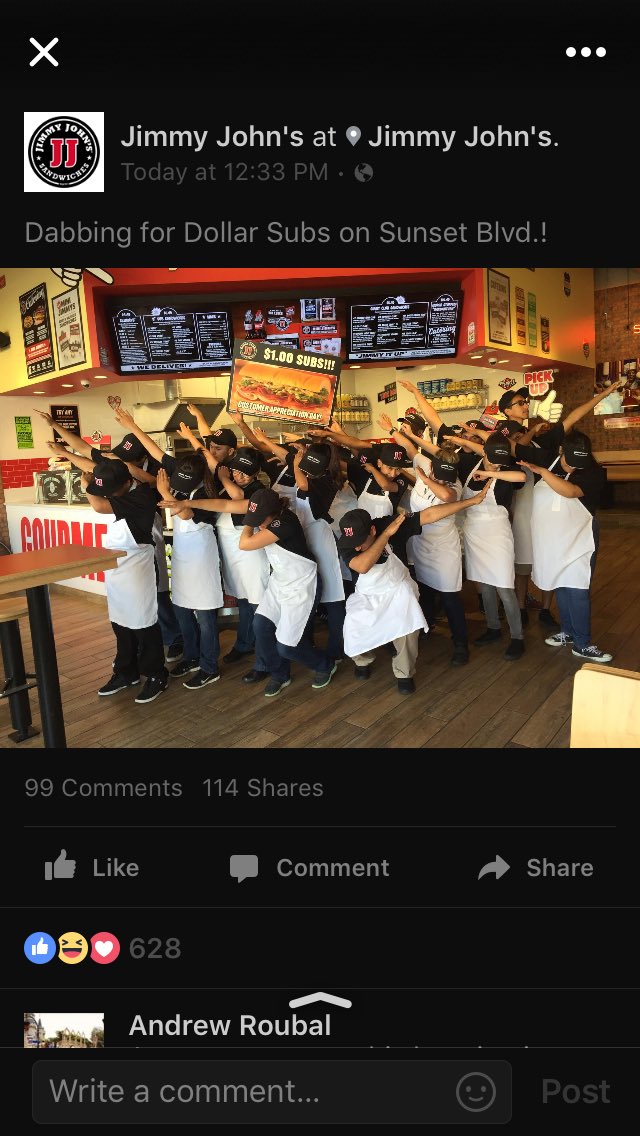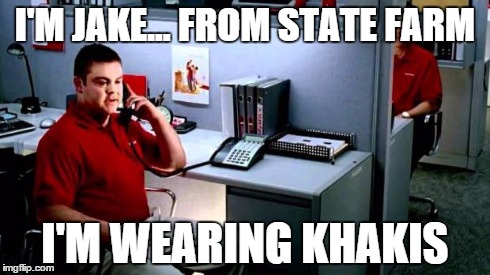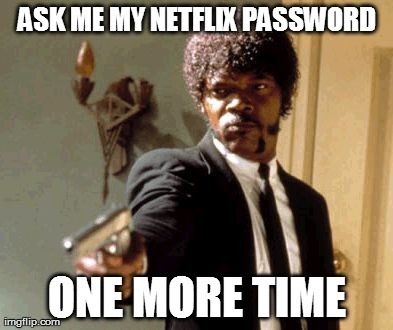Business of Memes
Greg Pace
Introduction:
This portion of the project I will be analyzing how companies and businesses are utilizing memes to advertise and market their brand/products. By using real world case studies and examples we will analyze the potential benefits and conversely the unforeseen consequences that can arise for businesses that embrace meme culture as a part of their marketing strategies.
Should brands use memes as a marketing tactic?
Memes by their very nature have a great potential to become viral (an image, video, advertisement, etc., that is circulated rapidly on the Internet). Thus it seems obvious that memes would be a good way to increase your engagement with your audience. When someone sees a meme online it can either: invokes an immediate reaction that is personal and relatable, or if the person is unfamiliar with that meme, they will likely overlook it. That personal connection to memes is exactly what marketers and advertisers try to achieve when connecting to their audience. It is important as marketer to understand that internet culture is all about sharing. Memes can be shared rapidly across multiple internet distribution channels and reach many different communities and demographics. Memes are recognizable, easy to read and to the point which draws in potential viewers. When businesses use memes properly in their marketing strategy it can help make your brand look “trendy.” Christian Bauckhage writes in his article, Insights into Internet Memes, that “professionals in marketing and campaigning have embraced Internet memes as a way to build rapport with trendy communities (Bauckhage, 2011).” Take a look at this great example from Jimmy John’s (a company that has a large demographic of college students) Facebook page showcasing one of their staffs doing the “dab.”

You should not that this is a cell phone screen shot of the post taken the same day that the post was made. Within such a short period of time you can see that over 628 people reacted to the post with a “Like” or the newly added “Love” option on Facebook. Over 99 people have commented and 114 people have shared it to their timeline. Typically post that companies make on their pages don’t even come close to this kind of positive reaction. By capitalizing on the trendiness and timing of this meme Jimmy Johns gets an incredible amount of “organic” traffic to their page at little to no cost to them. Organic traffic in marketing typically refers to the unpaid post or unpaid search engine queries whereas non-organic marketing typically is paid through pay per click or pay per impression. Some more advanced online marketing tactics include pay per acquisition but they can be very expensive but usually lead to a positive return on investment. Here is another great example of Jimmy Johns using memes to promote their products capitalizing on the name of their sandwich the “Pepe” with over 1,021 retweets!

The Jimmy Johns examples I have provided are all great examples of brands using memes intentionally. Memes that can be used to promote your business can also be curated by the internet community unintentionally. A good example would be the “Jake from state farm” meme that originally was just a clever TV ad.

Another great example of a community created meme that had a huge positive impact was “Netflix and Chill.” Netflix in particular sees lots of love from the meme community.



Even companies like IHOP have started adopting the Netflix and Chill meme for their own demographics.

These examples of unintentional memes worked out really great for state farm and Netflix but as a marketer you have to be careful that you do not make it look like you’re trying too hard or you might wind up on the subreddit /r/hailcorporate which’s purpose and goal is to expose obvious internet marketing attempts. Companies that use memes intentionally should always be up to date with internet culture and really understand their core audience and how they will respond. Older brands definitely struggle with this aspect when trying to appeal to younger demographics. Emily Karram a writer at WPROMOTE address this by stating “using memes in your marketing campaigns will just make you look goofy, like the soccer dad who can’t admit he’s no longer “with it.” Coming across as both uncool and unprofessional is your best likely outcome (Karram, 2015).”
Drawbacks of embracing meme culture.
I mentioned in the previous section how memes can either provoke a personal, relatable reaction or they will be overlooked but failed to mentioned another alternative. Markers must be aware must be aware that memes can come off as inappropriate or offensive especially if the audience isn’t familiar with the meme in use. Alex York a writer for Sprout Social sums it up nicely in his article, Marketing Memes: Do They Work?, stating, “Memes shouldn’t be used blindly (York, 2015).” York also mentions in his article the concept of “Memejacking” which is defined as when a company uses already-created memes for its marketing strategy. Lots of the examples given in the previous section would classify as being memejacked. York states that, “Memejacking is a risky move because you will either ride the wave of the viral post or you will seem like you’re trying too hard (York, 2015).” This quote really resonated with me because I often find myself “cringing” at a lot of the memes that I see in advertisements. There is even a parody twitter account called “Brands Saying Bae” whose bio is, “it’s cool when a corporation tweets like a teenager.”

This popular meme of Steve Buscemi is a perfect meme representation of when companies try too hard to appeal to younger audiences. There is even an entire subreddit based on the corresponding hashtag #FellowKids with over 94,000 active subscribers whose description is “a subreddit to showcase examples of advertisements and media that totally appeal to the radical youth of today. Cowabunga!” Truth the antismoking advertisement company definitely took #FellowKids to the next level with their meme filled advertisement “It’s a trap.”
Check out this post "Truth Just Aired the Most Cringeworth Antismoking Ad" which showcases how meme advertising campaigns can go wrong with top rated comments like: “Jesus Christ this makes me want a cigarette.” Reddit user PlatinumPancake even commented, “I think they did this on purpose so that people would mock it and share it with their friends, so that more people would see it.” As you can see from these examples companies have to be careful when deciding if utilizing memes in their marketing strategy is the right choice. Most memes have a short lifespan and tend to die off rather quickly so timing is important. As marketer you must make sure that you are constantly up to date with the internet culture of memes. Being able to identify what memes are relevant when it is appropriate to use memes is crucial for meme marketing success.
Don't Feed the Trolls
Another big thing markets must avoid are internet trolls. Internet trolling and memes are often closely associated together from communities like 4chan and reddit among others. Coca-Cola learned this one the hard with their interactive #GiftheFeeling campaign. Essentially they built a website where customers could go on and add their own text on top of their stock Coca-Cola footage and turn it into an easily sharable animation (.gif file extension). Needless to say the most popular user created gifs were all done by trolls…


(More examples available here)
By associating a sugary soft-drink with diabetes and obesity is probably the worst nightmare for the Coca-Cola Company and ultimately did serious damage their brand.
Memes as a business?
Some entrepreneurs and companies have found success in the literally business of memes. You’ve probably already seen at bookstores around the country books titled, “I Can Has Cheezburger?: A LOLcat Colleckshun” or “LOLcat Bible: In teh beginnin Ceiling Cat maded teh skiez an da Erfs n stuffs.”


While this kind of venture seems more of a novelty at this point, in 2009 Bonnie Ruberg connected the rise of the internet culture to the economic crash in her article, Cash In On the Internet Memes Phenomenon. She states that, “Suddenly you have lots and lots of unemployed people sitting at their computers with nothing to do all day, creating lots and lots and lots of content (Ruberg, 2009)." She also makes a good point about how getting a book deal is tough but if your “end goal is to do something you love … you’re a lot more likely [to be] successful (Ruberg, 2009).”
Concluding
We’ve seen that embracing meme culture in your marketing strategy can be a risk but also it can be an incredible effective, low cost method to reach a large audience. Memes hold true to McLuhan's quote that the “Medium is the message.”

Memes invoke immediate, relatable reactions that are easily sharable. When using existing memes, being familiar with the culture and knowing your audience is incredibly important to make sure it doesn’t look like you’re trying too hard. When businesses allow customer interaction with their campaigns they have to know how defending against internet trolls. Some people have found success in making entire businesses out of memes. Memes have been and will continue to be an incredible valuable marketing tool when used properly and I don’t expect them to be going anywhere soon.
Works Cited:
Bauckhage, Christian. "Insights into Internet Memes." ICWSM. 2011.Karram, Emily. "3 Reasons Not to Use Memes in Your Marketing Campaigns." WPROMOTE. 10 June 2015. Web. 04 May 2016. <http://www.wpromote.com/blog/3-reasons-not-to-use-memes-in-your-marketing-campaigns/>.
McLuhan, Marshall, and Quentin Fiore. "The medium is the message." New York 123 (1967): 126-128.
Ruberg, Bonnie. "Cash In On The Internet Memes Phenomenon." PC World 27.8 (2009): 33-34. Academic Search Complete. Web. 6 May 2016.
York, Alex. "Marketing Memes: Do They Work?" Sprout Social. 24 Nov. 2015. Web. 04 May 2016. <http://sproutsocial.com/insights/marketing-memes/>.